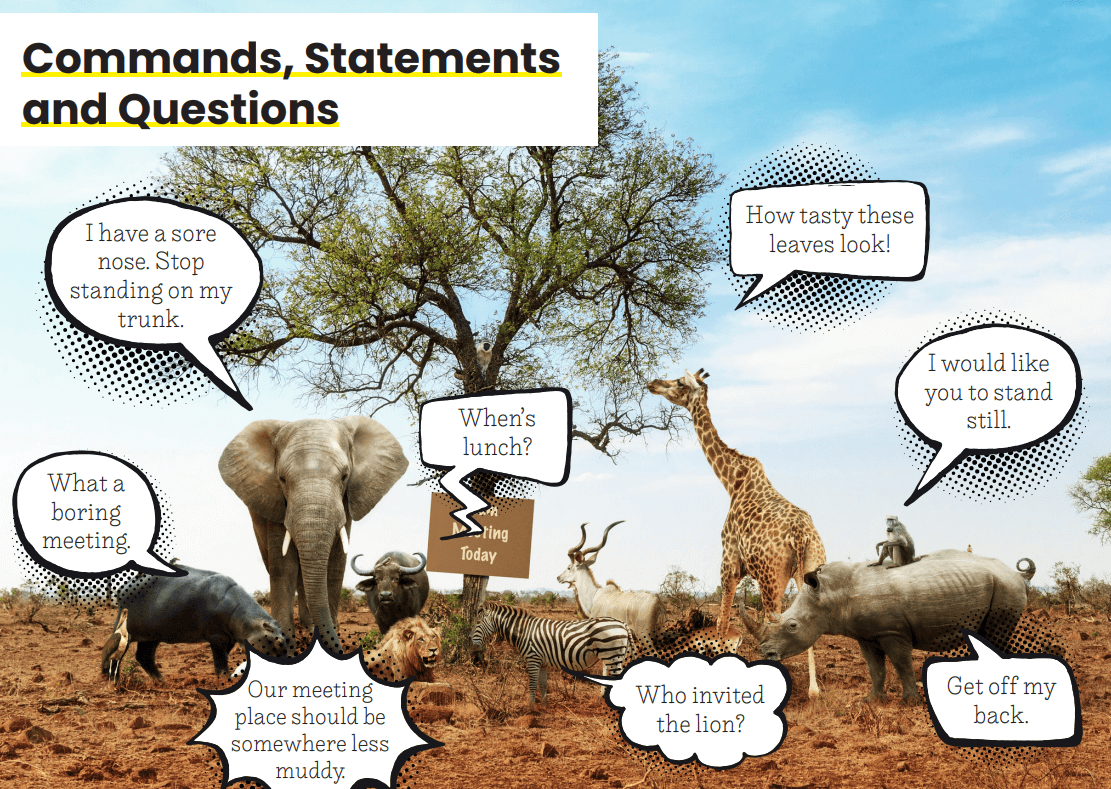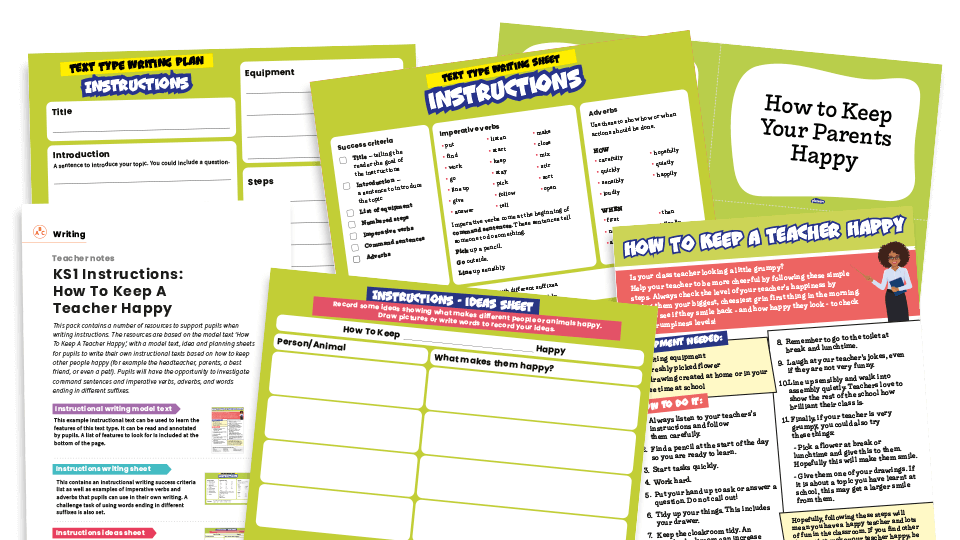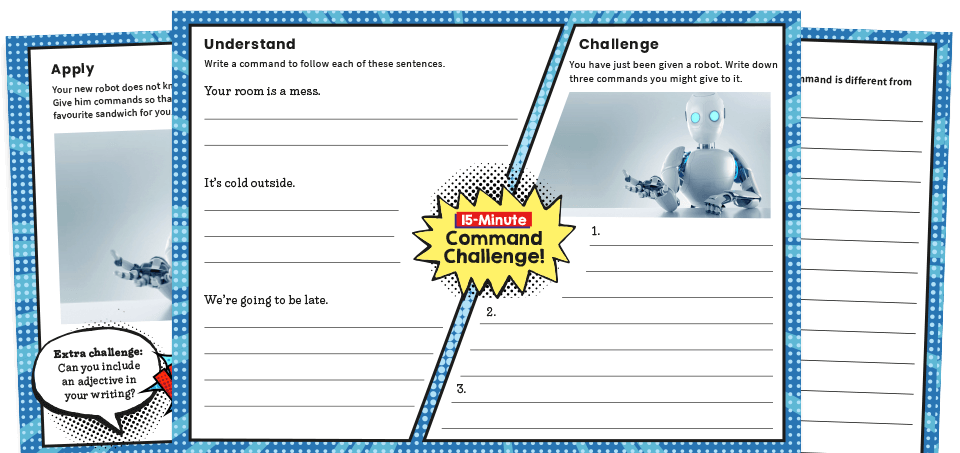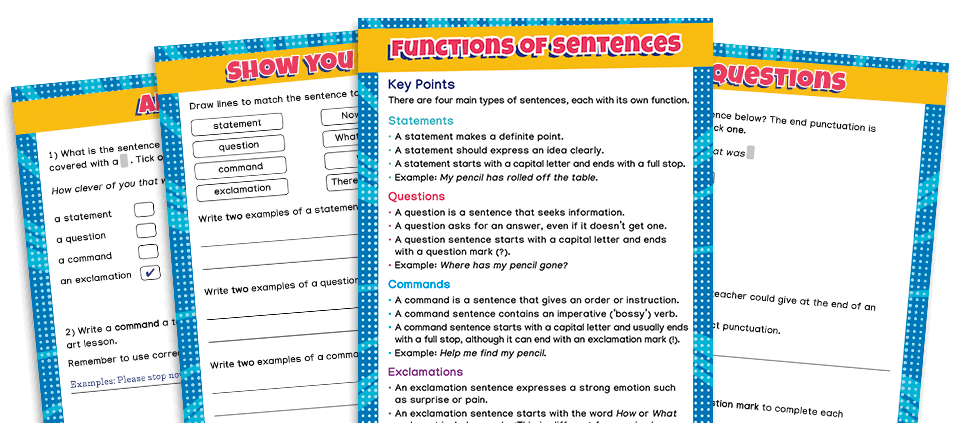If you think about it, the imperative is probably one of the most basic grammatical moods. Once you get past its rather pejorative ‘bossy’ tag, you realise that imperative verbs could well be the first verb form we respond to as infants: ‘ Open wide’, ‘Come to Mama’ and so on. Cats may not understand it, but dogs do.
However, as teachers, we must be able to help our pupils to both recognise it and use it confidently, especially because it will almost certainly appear in the KS2 SATs. So, get ready, pay attention and see how these tips could help you to teach imperative verbs with confidence...
1 Imperative sentence – Know your sentence types
As you no doubt know, your pupils need to be able to identify and write four main types of sentences by the end of KS1:
- statements (This is a book.)
- questions (What is that book?)
- commands (Read this book.)
- exclamations (What a great book this is!)
Imperative verbs are a defining feature of commands. With monotonous regularity, Grammar, Punctuation and Spelling SATs exams feature questions that require pupils to identify sentence types, so it's essential that you teach the functions of sentences thoroughly.
2 Instruction – Breaking down commands
Make sure that your primary school class completely understands what we mean by commands in a grammatical sense.
If they equate commands with barked orders, they might miss some because they are more like instructions than orders.
In short, they are sentences by which someone is told (not asked) to do something. Here is a useful video that explains command sentences in a way that is easy for children in Year 1 and Year 2 to understand.
3 What is an imperative verb?
A command sentence uses an imperative verb to say what is required to happen. The imperative uses the most basic form of the verb, known as the infinitive, without the word ‘to’ before it.
So, if the infinitives are to go, to fetch, to mix, to stir and to cut, the imperatives will be go, fetch, mix, stir and cut.
For other examples that you can stick up on your walls, why not download one of our KS1 interactive grammar displays?
 Commands, statements and questions poster
Commands, statements and questions poster4 Where to place an imperative verb in a sentence
Resist the temptation to tell your class that the imperative verb goes at the beginning of the sentence. While this is often the case, as in ‘Put on your coat’, it is not always true.
For example, command sentences often start with adverbials, such as ‘When it has risen, take it out of the oven’ or even ‘Carefully turn it out of the cake tin.’
Obviously, ‘when’ and ‘carefully’ are not any form of verbs, let alone imperative ones.
You will notice, however, that the actual verbs (take, turn) still use the imperative form, no matter where they come in the sentence.
5 Imperative verb, polite tone – ‘Bossy’ isn’t always rude
In the same way that commands are not always orders, make sure that your pupils are not misled by the term ‘bossy’.
Although it is useful as a sort of verbal shorthand to label imperative verbs as ‘bossy’, this does not mean that it has to be rude or officious.
The simple addition of the word ‘please’, for example, at the beginning of the sentence will prove that. Also, there are many ways to word a command sentence without it sounding bossy. Perhaps you could challenge your class to give an example that does not start with ‘please’.
Similarly, make sure that they do not confuse other sentence types with commands, just because they seem to do the same job. For example, ‘Would you mind being quiet?’ is a question, while ‘I would like you to be quiet’ is a statement.
6 Imperative verb – Spot the command
It is good practice in a lesson to ask children to pick out the command sentence from a collection of different sentence types as an independent activity, as this is typically the sort of challenge they will find in a SATs paper.
If possible, make the sentences as superficially as similar as possible, as in the being quiet example in tip 5.
7 Writing an instruction text
The best text type for learning how to write imperative verbs is a set of simple instructions. A cooking recipe is the most obvious example, although you could say it is too predictable.
Why not bring a little humour into it? Here’s an idea: get your class to write instructions relating to a part of a story you’ve been sharing, such as how a wolf could eat Little Red Riding Hood or, for older children, how to brew a Hogwarts-style magic potion for a specific purpose.
Take a look at our collection of text type WAGOLL learning packs, which include model texts for a huge range of simple instructions, such as this 'How to Keep a Teacher Happy' KS1 resource.
 How to Keep a Teacher Happy imperative verbs KS1 writing planner and model text
How to Keep a Teacher Happy imperative verbs KS1 writing planner and model text8 Imperative verbs in exclamations
Imperative verbs can be used in exclamations, expressing an order with particular strength of emotion – for example, ‘Sit down!’ or ‘Come here, right now!’
However, do make sure your class can distinguish between an exclamation and an exclamation sentence. The latter should begin with ‘how’ or ‘what’ and include a non-imperative verb, such as ‘How clever you are!’ or ‘What big teeth you have!’
9 Practising imperative verbs
As with most things, practising is an essential route to understanding. Our SPaG Gym challenge worksheets provide an attractive, ready-made resource to secure children’s learning about the functions of sentences.
 Year 2 commands SPaG worksheets
Year 2 commands SPaG worksheetsOr why not try teaching pupils this imperative verbs song?
10 Imperative form test
Whatever your feelings about tests, SATs practice is very important because it acclimatises pupils to the style of questions they are likely to face in external assessments.
Of course, you can go to the government’s practice materials website, download some past papers and extract the relevant questions.
Alternatively, you could make your life easier by using our SATs ‘functions of sentences’ recap worksheet resources.
 Functions of sentences SATs grammar recap
Functions of sentences SATs grammar recapPlease accept our gratitude for reading this far. Now, feel inspired to go and teach the imperative in English lessons with confidence. See, there was nothing bossy about those commands, was there?
Sue Drury qualified as a primary teacher in 1999. Teaching pupils from Year 1 to Year 8, she has held a variety of positions including maths and English subject leader, year leader, and assistant headteacher. Sue has mentored students and NQTs, offering guidance and advice using her years of experience. She created many of Plazoom's literacy resources.